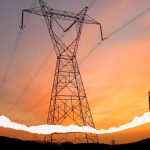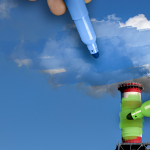The Internet of Things (IoT) is a powerful tool for automating energy savings. Systems that were once separate, like lighting and HVAC, can now be linked through a series of smart devices that exchange information with one another. When hooked into a building energy management system, this stream of performance data reveals opportunities to improve efficiency, cut costs, and increase occupants’ comfort.
While smart thermostats may be the most obvious IoT device when it comes to energy management, there are other devices that can assist in energy savings. Here are five useful types of sensors and controls that can help you take control of building operations.
1. Lighting Timers
Commercial buildings can benefit from smart lighting controls by eliminating the hassle of manually turning fixtures off or on. With a networked system, lights can be adjusted through a single interface – you don’t even have to be on the property to control illumination.
One easy way to take advantage of smart lighting is to turn on, off, or dim lights based on a programmed schedule of your choosing. For example, if most office workers leave a given building by 6pm, light fixtures in individual offices and open work areas can automatically shut off according to the schedule set. This prevents energy from being wasted when no one is around. Fixtures can also communicate with a virtual conference room scheduler, ensuring the lights are on only when there are meetings.
Smart lighting controls are particularly beneficial for existing buildings because you can upgrade one room or section at a time and expand the system as your budget allows.
2. Photosensors
Daylight sensors are another way to reduce energy waste. These connected devices can detect shifting levels of sunlight. When connected to a dimming control, the daylight sensor triggers the lights to adjust in brightness when a room is exposed to natural sunlight. This practice is called daylight harvesting because you are using natural light to offset the need for electrical light.
Imagine a row of workstations positioned near a bank of east-facing windows. As the sun rises in the morning, light penetrates the room interior. Sensing the sunlight, the daylight sensor tells the lighting control to dim light levels by 30%. When the sunlight begins to pass over the building, the daylight sensor can tell the lighting control to bring the lights to full intensity.
This same capability can be applied to exterior building and parking lot lighting as well, avoiding the hassle of setting different schedules according to the time of the year, too. Sunrise and sunset can shift by several hours depending on the season. During the winter, outdoor lighting may need to turn on around 4pm but may not be necessary until closer to 8pm in the summer. A daylight sensor can communicate to the light fixtures when it is an appropriate time to turn on or off based on ambient light levels.
3. Occupancy Sensors
When you approach an automatic door, passive infrared sensors detect heat and motion generated by your body and send a signal that opens the door for you. Many building energy management systems use the same technology to determine if a room is occupied. For example, the occupancy sensor can cue the lighting system to turn off the lights when it detects that a space is empty and then turn them on when someone enters the room.
These types of IoT sensors can also feed data to your HVAC system. An unoccupied room doesn’t need the same heating, cooling, or ventilation needs as when there are workers present. Empty rooms are an opportunity to widen the temperature setpoints, which reduces the amount of energy needed to condition the space.
Occupancy sensors enable you to control the climate based on real-time activity. They are most commonly installed in spaces that are used intermittently, such as conference rooms, private offices, storage, hallways, and restrooms.
4. Water Sensors
The ability to stay ahead of leaks is crucial for the longevity of a building. Undetected moisture can cause mold, wood rot, rust, and other structural damage. Facilities with server rooms, laboratory or medical equipment, computer labs, and museum archives must also be especially vigilant about leaks.
Water sensors can detect leaks within seconds of coming into contact with moisture. Using wireless communication, they can send an alert to a smartphone or through a desktop notification; some even have an audible alarm. This immediate detection allows building professionals to respond swiftly to a water issue before it gets out of hand.
It’s a good idea to place sensors near water heaters, laundry machines, sink plumbing, toilets, condensate overflow pans, ice machines, ceiling grids, or even inside pipes. Several systems even produce a digital map that shows the location of each sensor and changes color whenever there is a leak.
There are even IoT water sensors that have the power to automatically shut off equipment. This can be a significant advantage if a water leak occurs after hours or on the weekend when building management is off duty.
5. Temperature Sensors
How useful would it be to receive a text message when a freezer door is left open or if a refrigerator loses power? Cold temperatures are paramount for food safety as they slow the growth of pathogens like Salmonella and E. coli. To reduce the risk of foodborne illness, the FDA advises that a refrigerator should be at 40 degrees or lower and a freezer should be at 0 degrees.
A wireless freezer or refrigerator sensor can send an alert whenever temperature levels stray outside of the acceptable threshold – common reason can be that the door was left open, power loss, or an issue with the cooling system in general.
Temperature sensors can eliminate the need for manual checks and paper records, which saves time for maintenance staff. Some temperature probes will generate daily logs, which can be used for FDA and state public health compliance reporting. Cold temperatures are vital for food safety as they slow the growth of pathogens like Salmonella and E. coli. To reduce the risk of foodborne illness, the FDA advises that a refrigerator should be at 40 degrees or lower and a freezer should be at 0 degrees.
Temperature sensors are also helpful for healthcare and life science facilities that must abide by CDC guidelines for storing vaccines, biological samples, and environmental testing materials.
Building Intelligence at Your Fingertips
IoT devices are making their way into every corner of commercial buildings. Wireless communication allows HVAC, lighting, security, window shades, plug loads, and so much more to be managed from a mobile application or building automation system. This on-the-go control simplifies operations and keeps occupants comfortable while reducing energy costs.
Want to learn more about how IoT devices can help you save on energy? Schedule a Zen HQ demo today.






